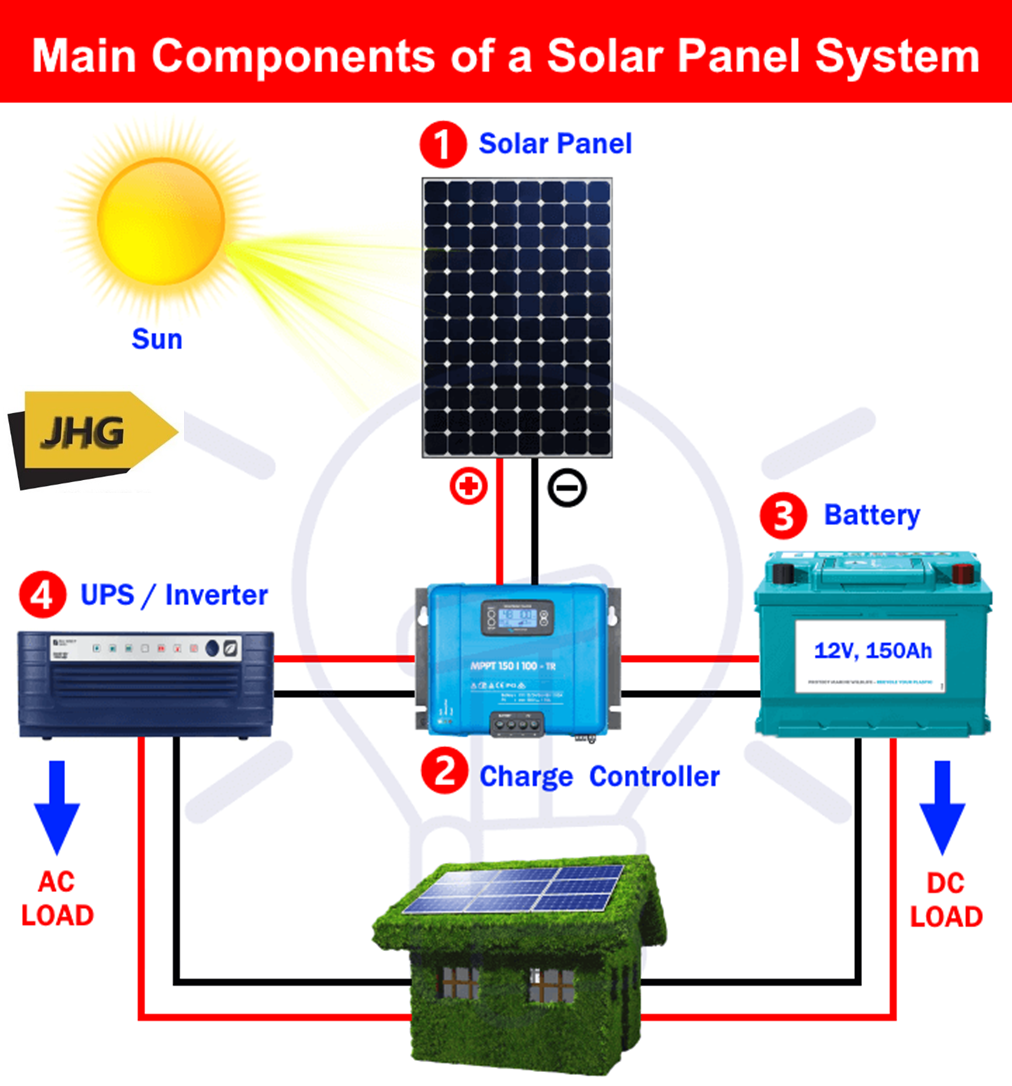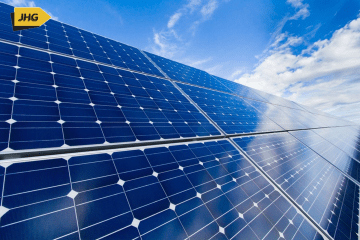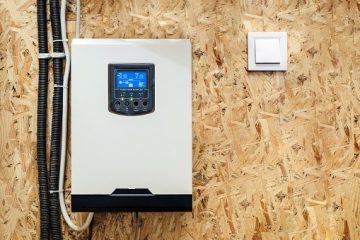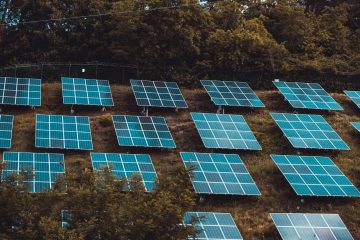Green energy, clean and renewable solar energy is the best alternative for residual and industrial consumers around the world. It minimizes the overall running cost and carbon environmental pollution. The opt-out transform percentage from regular power sources to green energy, especially solar power is rapidly growing in the world.
Solar Panel System
The solar panel (also known as a photovoltaic cell or solar cell) is a device that absorbs photos from sunlight and converts them to electrical energy.
In recent years, the concept of of-grid and smart grid systems is more popular and consumers opting out for clean energy like wind and solar power systems to eliminate or at least reduce the dependency on regular power from electricity providers and reduce the overall running cost as well. An efficient solar power system with a warranty for many years will lead to recovery of the initial cost and free energy.
Main Components of a Solar Panel System
Below are the basic and general components and devices needed for a solar panel system installation at home. Details of each device are given below each section.
1. Solar Panel
The solar panel also known as Solar Cell or Photo Voltaic Cell is the backbone of a solar power system. There are some types of solar panels such as polycrystalline and monocrystalline. Monocrystalline is more efficient and a little bit more expensive as compared to polycrystalline solar panels. The selection criteria for a solar panel are different i.e. space, warranty, efficiency, technology type, cost, etc. Keep in mind that output is the king when selecting a proper solar panel for residential solar power installation.
In general, the solar panel is directly connected to the charge controller but there is a different connection of solar panel arrays such as series and parallel connection which depends on load calculation and specific energy requirement for home appliances, battery bank connection, roof surface space, climate and peak sunshine hours.
You can easily find the number of required solar panels and charging current for the battery and follow the step-by-step guide for solar panel installation with inverter rating, and backup power of batteries according to the load requirement.
2. Charge Controller
As the name suggests, a charge controller (also known as a charge regulator) is a device that is used to regulate the voltage and current from the solar panels connected to the batteries. The main purpose of a charge controller is to prevent the overcharging of batteries (which may lead to damage to the battery as well) through solar panels as 12V solar panels provided 17-20V in case of no load or full sunshine. The reason behind this scene is that manufacturers design solar panels for different climates and environments so that, you get the max rated voltage in case of cloud cover, low sunshine, heavy haze, etc.
There are multiple types of charge controllers available in the market such as follow:
- Simple – 1 and 2 Stage Charge Controllers: Relay and shunt resistors are used to control the voltage in single or two stages to disconnect the solar panel from the battery in case of overvoltage.
- PWM (Pulse Width Modulation) – 3 Stage Charge Controllers: It is based on the pulse with modulation and cutoff of the battery circuit from the connected solar panel from the photo-voltaic cell in case of overcharging.
- MPPT (Maximum Power Point Tracking) Controllers: MPPT is a DC-to-DC converter in case of solar panels array to the battery bank. It optimizes and regulates the higher DC voltage levels from the solar panel and converts to the lower optimized and regulated voltage to charge the battery. These are a little bit expensive but more efficient. They provide 10-30% more power to the battery with an efficiency of 94-98%.
3. Battery
Batteries are used for backup charge storage. there are different types of batteries used in solar power system for storage and backup operation overnight when direct power from solar panels are not available. Series, the parallel or series-parallel connection of batteries bank depends on the system design i.e. 12V, 24V, or 48V system configuration. In case of clouds and no sunshine, the battery bank can be charged through an AC supply from the power grid via an inverter for later use.
4. Inverter / UPS
An inverter is a device that converts the DC power supply to the AC power supply. The inverter and converter which are known as UPS (Uninterruptible Power Supply) are used to convert the DC voltage to AC for AC-operated home appliances. UPS is also used to convert the AC to DC to charge the battery from a direct AC power supply.
There are many types of inverters available in the market according to your needs such as follow:
- Centralized or String Inverter with less cost but inefficient.
- Power Optimizer used to convert DC to AC and connected to a central inverter.
- Micro Inverter with the smooth and reliable operation even with low sunshine but costly.
Which one is the Best Solar Panel for a Home and How Much Does it Cost?
monocrystalline solar panels are a better option than polycrystalline but they are a little bit expensive. The final decision depends on many factors such as your region and environment, sunshine hours, load requirements, and types of batteries used in the system, etc. We have already discussed the topic in detail as it depends on many factors such as load, space, environment, technology, backup hours, etc and all these factors should be considered while selecting a proper solar panel installation system according to the requirements.




